Before I dive into this interview with Berni Solti (aka @Gingerland), please stop whatever you’re doing and give her a huge round of applause! ![]() Berni now holds the official record for site art submissions, topping out at five in total with four more still to post between now and February 2019. I am so grateful and thrilled that Berni heard my recent plea and took the time to repackage some of her existing cookie photos into site banners and backgrounds for us. Our site is all the more lovely (and varied) because of her efforts. I’d love to see more of everyone else’s art on the site too, so if you have any questions about how to accomplish this with ease and style, Berni is clearly the one to go to! (Or you can email me, of course!)
Berni now holds the official record for site art submissions, topping out at five in total with four more still to post between now and February 2019. I am so grateful and thrilled that Berni heard my recent plea and took the time to repackage some of her existing cookie photos into site banners and backgrounds for us. Our site is all the more lovely (and varied) because of her efforts. I’d love to see more of everyone else’s art on the site too, so if you have any questions about how to accomplish this with ease and style, Berni is clearly the one to go to! (Or you can email me, of course!) ![]()
Now, onto our Close-up! As you may know from reading Berni’s recent forum intro, she lives in Budapest, Hungary and is a stay-at-home mom to a three-year-old boy. Berni discovered cookie decorating in 2012, and now primarily works with traditional Hungarian honey gingerbread dough. Berni’s favorite cookie themes are weddings and baby showers. She also enjoys arranging cookies in artful ways and photographing them creatively so they "tell a story”. (For an example, see her fun cookie set at the very end of this post!) Berni recently discovered airbrushing and is now happily exploring that technique. A hobbyist decorator, Berni makes cookies and conducts workshops for friends while pursuing her larger mission of helping people understand that cookies aren’t just for Christmas! They can and should be savored throughout the entire year!
So with that background behind us, let’s dig in!
![]()
JMU: Hi, Berni! It’s such a pleasure to be chatting with you! Thank you again for all of your recent - and very striking – site art submissions! I’d like to start at the beginning to better understand how and why you got involved with cookie decorating in 2012. What or who first lured you into the craft, and what specifically appealed to you about it? Why not decorate cakes or cupcakes instead?!
![]()
BS: Hi, Julia! I am honored to be here talking with you. Making honey gingerbread cookies for Christmas is a tradition in my country, so I started making them actually just for fun as a Christmas activity. My cookies were really simple at the beginning, without flood icing, and with only white lines on the “naked” cookies to make simple patterns. (See photo below.)
I chose cookies as my medium, because cakes are more time-consuming. You have to work hours and hours to see the result, while cookie decorating can give you instant gratification. I mostly make cakes for family members’ birthdays and even those I tend to decorate with cookies. Also cookies are less stressful. If I happen to ruin one, there is always someone around to make the mistake disappear! ![]()
![]()
JMU: I know you’re a busy mom with an active young boy. So, tell us, how and when do you find time (and quiet! ![]() ) for cookie decorating? How much time each week do you spend making cookies and conducting workshops? How many cookies and workshops do you typically produce each week, and each month?
) for cookie decorating? How much time each week do you spend making cookies and conducting workshops? How many cookies and workshops do you typically produce each week, and each month?
![]()
BS: I usually work during the night while my son is sleeping or during the days when he is in nursery school. Luckily with decorated cookies, there is no need to hurry. You can work just a bit if you have only a little time, and put them aside until you are more free.
During Christmas, I spend countless hours baking and decorating cookies. Other times of the year, I usually work on one project per week, which means around 20 cookies. But sometimes weeks pass by without me actually decorating, and I am just spending time dreaming and planning what I will do next. I hold workshops only occasionally, though more often before the holiday season.
![]()
JMU: You’re a self-proclaimed “hobbyist” baker. Yet you’ve been decorating for quite a while and are clearly proficient in many techniques, so why do you call yourself a “hobbyist” and not a “professional” or “semi-professional”? Are particular certifications required in Hungary to be considered “professional”? If so, what are they?
![]()
BS: Maybe it’s my reserved nature, but I would not call myself a professional even though I have been making cookies for a long time and am familiar with many techniques. “Professional” to me means someone like you, Julia, an expert who knows everything from A to Z about cookie decorating. I am far from that. ![]() I don’t think that being a “professional” should depend on having any certificate. It’s more someone’s knowledge and quality of work that makes him/her professional.
I don’t think that being a “professional” should depend on having any certificate. It’s more someone’s knowledge and quality of work that makes him/her professional.
![]()
JMU: Well, you just gave me a ton of credit, which I’m not sure I’ve completely earned – but thank you for the kind words! Let’s turn to cookies and cookie decorating technique for a bit. You mentioned you work with traditional Hungarian honey gingerbread dough. Apart from it just being traditionally used there, does it have other attributes that make it a good medium for cutout cookie decorating? Are other types of rolled cookies beginning to gain in popularity in Hungary? Or do you think honey gingerbread will always be the mainstay there? Please explain any trends you see there in rolled cookie recipes.
![]()
BS: Honey gingerbread cookie dough is really versatile, can be used many ways, and can be re-rolled hundreds of times without breaking, unlike sugar cookie dough. It is great for 3-D projects and, due to the high percentage of honey in it, it has a really long shelf life.
I don’t see any other rolled cookie taking the place of honey gingerbread here in Hungary. Sometimes I make chocolate cookies, but when it comes time to choose, people always pick the gingerbread. People are simply not interested in any other kind of cookie. It has been in our life as a tradition for so long that it would be difficult to change.
![]()
JMU: So interesting . . . one day I’ll need to learn more about how that recipe originated in Hungary, and why it hasn’t taken root here in the US quite as vigorously. But, onward for now . . . there also seems to be a traditional way to decorate Hungarian gingerbread, which often involves what I call “needlepoint” (others call it “cross-stitch”) and colorful folk art floral patterns. How would you characterize the traditional methods of decorating there? What do these motifs represent, and why are they such popular decorating forms?
![]()
BS: Intricately decorated gingerbread cookies are part of our cultural heritage. The Hungarian floral embroidery patterns go back a long way (hundreds of years) and, in recent years, they have become really popular indeed. You can see them on clothes and, of course, on cookies too.
The motifs of each region vary - each color and each motif has its own meaning. For example: red rose = love, tulip = feminity, forget-me-not = loyalty, etc. These motifs can also signify the age and social status of the person wearing the clothes.
The best known types of Hungarian embroidery are the colorful Kalocsa and Matyó embroidery. (The latter is pictured above.) They have become the embroidery that represents Hungary all over the world, even though we have many other types of embroidery. Matyó embroidery is the oldest, with about 200 years of history. Its most famous flower is the cabbage rose, made up of a series of petals that curl around the core at its center. Even in Kalocsa embroidery, the rose is a dominant flower; however, it also uses forget-me-nots, lilies, tulips, wheat, cornflowers, violets, and paprika to fill gaps.
Hungarian folk art received great attention after Formula One in 2011, when race car drivers used these patterns on their uniforms. I think the main reason for its popularity is that we try to honor our roots to keep our culture alive. Even when this folk art fades from everyday, we bring it back to life with a new approach, or in a modern style, be it on clothes, cookies, or something else. (By the way, that's Kalotaszegi embroidery in the blue cookies below.)
![]()
JMU: Wow, thanks for all of that history! I never knew race car drivers wore these patterns – I thought they were reserved for more feminine accoutrements, but you learn something new every day! You seem to deviate from these traditional styles of Hungarian decorating though. Your style, to me, is bolder and more modern with stronger, cleaner lines. Would you say this is true, and, if so, why have you departed from traditional decorating styles?
![]()
BS: It is definitely true. I have never really gone deep into the traditional style (no matter how beautiful it is!), because I have always been attracted to more modern decorating styles. Even from the beginning, I decorated my cookies that way. Also, since we have a lot of people decorating gingerbread in the traditional way, I wanted to stand out from the crowd and do something different.
![]()
JMU: Differentiation always makes good sense! So, who or what has most influenced your personal decorating style over time? How have you gone about discovering and learning “new” techniques?
![]()
BS: First and foremost, I must mention Sweet Sugarbelle. Until I found her site, I hadn’t realized that cookies could be made and decorated any other way than we do our traditional gingerbread cookies, or for occasions other than Christmas. So, at that moment, a whole new world opened up to me.
![]()
JMU: In your bio, you said you “recently discovered airbrushing and are happily exploring that technique”. How did you discover it, and what have been your key discoveries about that technique?
![]()
BS: Last Christmas, Santa brought me an airbrush. It was actually in the box for almost half the year, as I was afraid to use it. Then slowly-slowly we became friends. ![]() First, I used it only for shading; then I saw the videos of Stencibelle and The Cookie Countess, and I started to experiment using stencils too. Stenciling is my favorite method for using my airbrush at the moment.
First, I used it only for shading; then I saw the videos of Stencibelle and The Cookie Countess, and I started to experiment using stencils too. Stenciling is my favorite method for using my airbrush at the moment.
![]()
JMU: I'm glad you finally opened up that airbrush box! You clearly have a knack for airbrushing and stenciling, as the previous two cookie sets attest! Now . . . if you had to teach a bunch of newbie decorators how to airbrush, what would be your top three to five tips for them, to ensure that they got consistently great results?
![]()
BS: My first advice would be to go slowly and do more layers instead of putting on one thick layer of coloring. Hold the gun at a 90-degree angle to the cookie and stencil, almost straight down to ensure clean lines. And try to follow the “lines” of the stencil (especially when doing striped patterns) to avoid underspray. Use a stencil frame to hold the stencil - it’s a game-changer! And the last one goes without saying: clean the airbrush after each use.
![]()
JMU: Great tips! You mentioned in your bio that you also teach workshops. How did you go from learning cookie decorating not all that long ago to teaching? In other words, how did you acquire your teaching skills and develop a quality reputation for teaching in your area?
![]()
BS: I’ve had requests for classes from friends since the beginning. However, I just gathered the courage to jump into teaching a year ago. I collected a couple of friends (who were not even interested in cookie decorating) and asked them to participate in order to help me work out what I could fit into a class, to see how they would cope, etc. . . . in other words: I needed their feedback. After having this “mock-up” class, I felt more secure about holding my first official class.
![]()
JMU: What a brilliant idea to do a trial class, especially with newbies who have no preconceived idea of what a cookie class should be. Can you tell us a little more about how your classes are structured, and why you chose to structure them this way? For instance, how many people, of what skill levels, are in your typical class? How long does your average class last? How many cookies, cookie projects, or techniques do you cover in your typical class? Where do you operate your classes – out of your home? in a rented space? other?
![]()
BS: I teach two to four students at a time, because of my limited space (I teach my classes at home). The other reason is because I can only give full attention to each student if I have a small group. Each class lasts four hours, and I teach only beginners. My classes are more technique-based than project-based. After understanding royal icing consistency, we practice basic lines, scrolls, dots, etc. on laminated paper; then we move on to work on actual cookies, starting with the easiest techniques and progressing to more difficult ones.
The techniques that I usually cover include: outlining and flooding, wet-on-wet, simple borders, stenciling, brush embroidery, and broderie anglaise. The point of my classes is to show as many techniques as I can and for students to try them, so that, after class, they can decide which techniques they want to use at home when nobody is holding their hands. The all-time favorite technique is stenciling, because, with little effort, everyone can make cookies that stand out. Students also like the versatility of the wet-on-wet technique.
![]()
JMU: Quick aside: I just had to slip in the above photo of your charming Easter box. I think it's a nice example of your modern aesthetic merging with more traditional box construction techniques. Now, back to the subject at hand . . . If you were approached by someone who was eager to start teaching cookie decorating, what three to five tips would you give her/him to ensure s/he teaches a good class?
![]()
BS: First, define the students’ skill level needed for the class. Be sure that everyone has more or less the same knowledge. Don’t do classes with too many students unless you can divide your attention in many ways. I can’t! ![]() Be patient if someone is slower than the others; give encouragement and help the slower decorators enjoy the class. In the end, learning cookie decorating has to be fun! Use simple shapes (like circles, squares, and hearts). These shapes can be decorated many ways and give creative freedom to students. Keep to the planned schedule; otherwise you could run out of time, and/or students could go home unsatisfied.
Be patient if someone is slower than the others; give encouragement and help the slower decorators enjoy the class. In the end, learning cookie decorating has to be fun! Use simple shapes (like circles, squares, and hearts). These shapes can be decorated many ways and give creative freedom to students. Keep to the planned schedule; otherwise you could run out of time, and/or students could go home unsatisfied.
![]()
JMU: Again, great tips! Onto a trend question . . . over the last five years or so, we’ve seen explosive growth in cookie decorating, particularly as an art form, here in the US. Have you seen similar growth in Hungary? Why or why not? Where, if anywhere, is that growth occurring? In other words, who/what is fueling that growth – commercial businesses that sell cookies? hobbyists who are just decorating for the fun and learning of it? professionals who are decorating for instructional or competition purposes? Why do you think these trends are occurring, and are they likely to continue in the foreseeable future?
![]()
BS: I see more and more people getting familiar with cookie decorating, but I don’t think it will ever be as popular as in the US. Here in Hungary, we seem to keep to our traditional style and be less open to modern cookie decorating.
That all being said, the growth will continue though, because there is always a need for homemade gifts. (In Hungary, we mainly use gingerbread cookies as keepsake or other gifts.) Also, in our fast-paced world, people need a “space” where they can slow down, and cookie decorating is the perfect craft for doing this. It can give so much to everyone, at any level. After you create a cookie, it’s easy to feel a sense of accomplishment and happiness. Another reason for the growth might be because it’s now really easy to buy cookie cutters in any shape and other decorating equipment and supplies. Such was not the case a couple of years ago.
![]()
JMU: And, for my usual parting question, where do you see yourself in the cookie world in the next three years? What are your cookie dreams and aspirations?
![]()
BS: Well, if I dream big, I would say that it would be nice to make a living out of the hobby that I love. But I am also happy just to continue this cookie journey as it is, exploring and learning new techniques, because cookie decorating is my therapy and relaxation. ![]()
JMU: Well, I encourage you to dream big. As Eleanor Roosevelt once said, “The future belongs to those who believe in the beauty of their dreams.” I think she's right.
Thank you ever so much, Berni, for sharing your rich heritage and decorating experience with us today – and for all of your site art contributions! I can’t wait to post the rest to Cookie Connection over the next few months!
To learn more about Berni, please visit her website and Facebook and Instagram pages.
All cookie and photo credits: Berni Solti

Cookier Close-ups is the place on Cookie Connection where we celebrate the change-makers of the cookie decorating world. Whether forging new enterprises, inventing novel decorating techniques, or consistently charming us with their cookie decorating prowess, each of our featured thought leaders has redefined in his/her distinctive way how we interact, create, or otherwise do business here in cookie space!
If there are other cookiers you'd really like to get to know, please post requests in this forum. We'll do our best to round them up for an upcoming Cookier Close-up! Thanks!


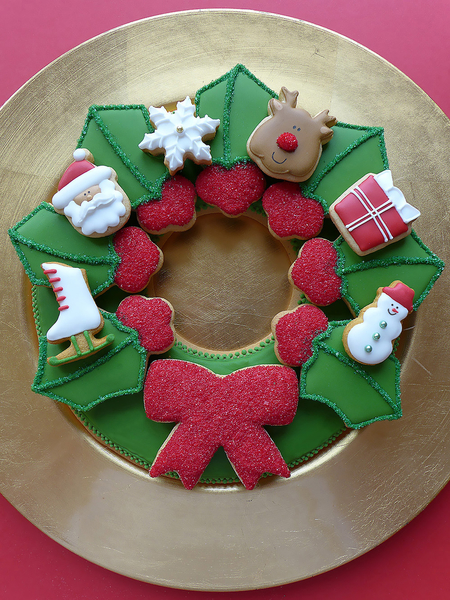
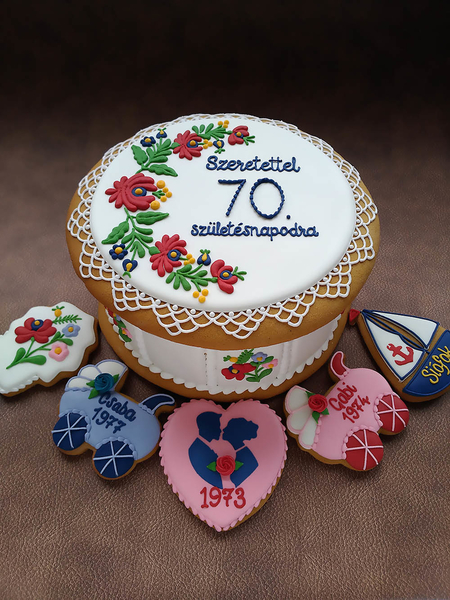
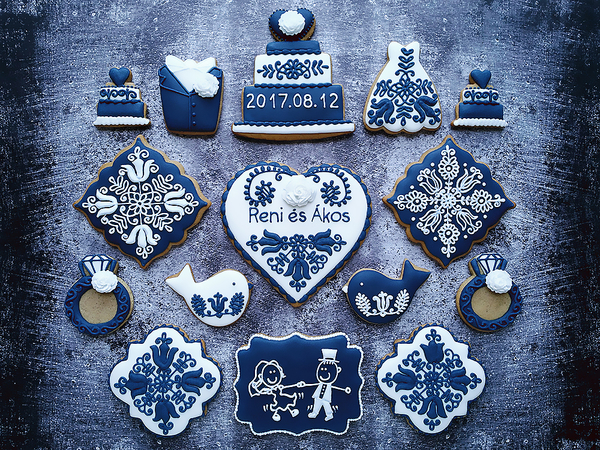
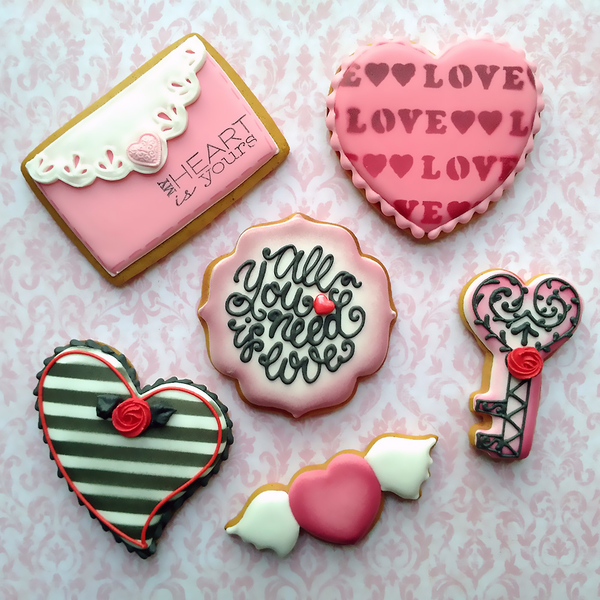
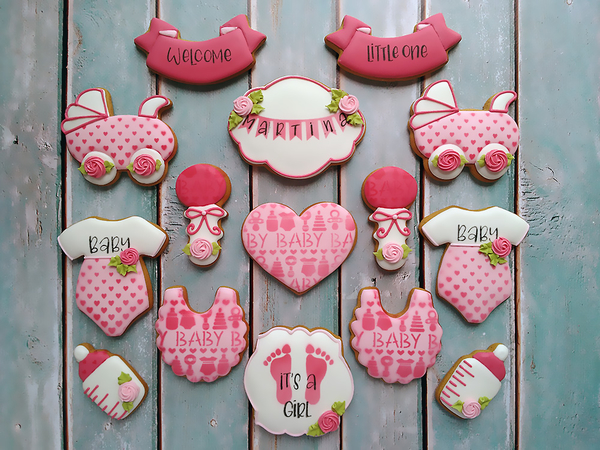
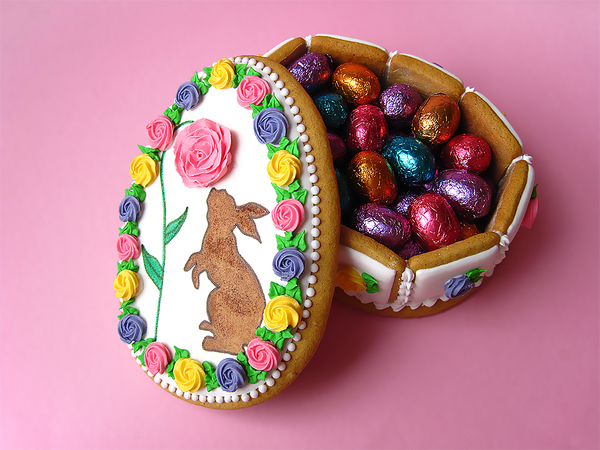
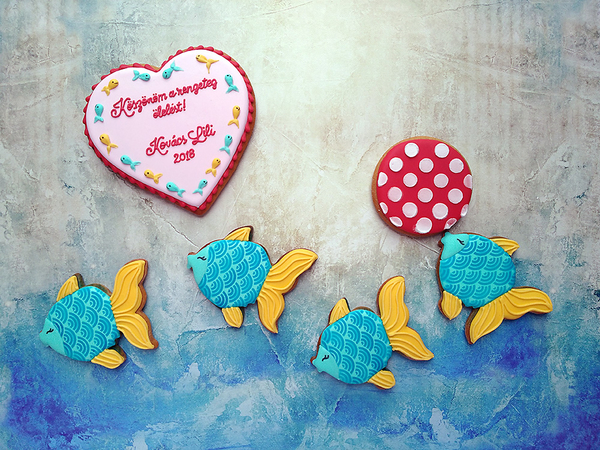
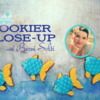

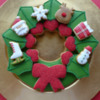

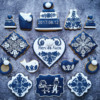
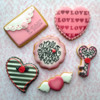

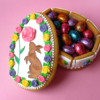
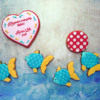
Comments (8)